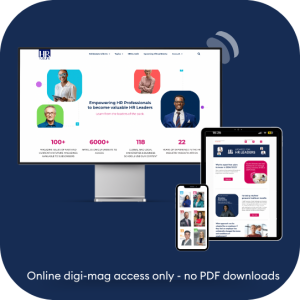The Impact Of Office Equipment on Employee Productivity and Health
Due to the global health restrictions in 2020, many office workers were left with no choice but to work from home. Even when doors reopened in the following years, 61% of people still preferred their workstations at home over their company workplaces. One of the main reasons employees cite is the lack of productivity in the office. It could be because of the commute, safety protocols, environment, or even poor office equipment.
Office equipment should empower, not hinder, productivity. Yet poor ergonomics commonly provoke employee complaints of health issues and performance barriers. As technology and digitization accelerate, HR must make informed choices to support well-being.
This article explores strategies to help HR select equipment for peak performance. It’ll review the tangible benefits of optimised spaces, the potential risks of poor configurations, and practical assessment tips.
Positive impacts of well-chosen equipment
Increased productivity
Equipping employees with ergonomic and workflow-optimised tools delivers measurable productivity boosts that pay off. Studies show that offices that prioritize ergonomics in their workspace design and arrangement see an increase in efficiency and productivity. With ergonomic equipment, employees experience fewer work-related injuries, leading to improved work output.
Quality desks and dual monitor setups amplify efficiency by reducing repetitive actions that lead to neck or wrist strain. Premium adjustable seating, like office chairs for businesses, with customisable lumbar support, minimises fatigue from prolonged sitting.
Specialized tools increase focus, accuracy, and consistency by minimising strain and wasted time. Neck, eye, or back fatigue is reduced daily, boosting efficiency and maximising individual and team resources.
Enhanced employee well-being
Well-aligned equipment safeguards long-term employee health, a critical ingredient for enabling sustainable, thriving teams. Generic furnishings often exacerbate repetitive stress and inflammation.
However, options like standing desks, external mice, and split keyboards enable users to switch positions as they see fit. These ergonomic tools help maintain wrist, hand, and arm alignment for injury prevention and significantly lower the risk of musculoskeletal disorder. Anti-glare screens, properly distanced monitors, and occupant-controlled lighting prevent chronic headaches and eye discomfort.
Personalized tools catering to individuals’ needs give staff essential physical support for mental stamina and productivity all day.
Improved employee morale and engagement
Premium ergonomic investments signal that management values well-being, sparking engagement and goodwill. Workers feel respected through customised comfort aids, minimising distractions, and controlling barriers.
Such comfort investments boost engagement, sparking positive feelings that increase retention and loyalty. Empowered staff taking ownership of their space feel intrinsically motivated to find meaning and fully apply their talents.
Negative impacts of poor equipment choices
Reduced productivity
Neglected spaces actively degrade productivity through physical discomfort and concentration barriers. Ill-aligned furniture forces more breaks, and toggle-heavy setups disrupt workflow focus.
These compounding factors breed frustration and disengagement. Research indicates that workplace design significantly affects productivity, as poor lighting and noisy equipment distract employees from working efficiently.
Increased health risks
Long-term use of non-ergonomic equipment raises serious health concerns. Chairs lacking lumbar support and cushioning could cause spinal misalignment, nerve impingements, and chronic back pain. Repetitive movements like typing on cramped keyboards may also lead to unhealthy postures, one of the common causes of workplace injuries.
Generic input devices force awkward hand angles, resulting in inflammation. Nerve compression may trigger repetitive stress disorders over time. Limited adjustments for screen glare, distance, and lighting subject eyes to excessive strain. This heightens employees’ risk of deteriorating vision or needing corrective aid.
Decreased employee morale and engagement
Uncomfortable, health-harming equipment takes a mental toll, breeding resentment over unaddressed pain points and negative workplace associations. Gradual musculoskeletal and vision degradation from poor ergonomics can spur job search efforts.
Employees facing these worsening issues are understandably less engaged, less energetic, and less positive about their roles. Some may actively job hunt if their employer refuses to address glaring environmental issues degrading health and happiness at work.
Strategies for optimising equipment for productivity and health
Conducting a workplace assessment
HR professionals should conduct robust environmental audits of all workstations, identifying improvement areas per employee’s needs. Online tools can help assess alignment with ergonomic best practices.
Straightforward employee interviews that uncover chronic issues and inspections of shared equipment are invaluable for tailoring upgrades. These insights inform budget planning and priorities.
Investing in the right equipment
Armed with assessment data, HR experts can strategically invest in equipment demonstrated to maximise worker effectiveness and comfort. When replacing furniture, select options with adjustable features.
Prioritize configurable ergonomic office chairs and desks that meet diverse needs. Wrist cushions, quality mice, and specialised keyboards boost efficiency and promote neutral joint positions. Well-researched purchases deliver exponential returns through healthier, happier, and better-equipped staff.
Promoting proper equipment use
Complementary equipment training ensures employees reap the full benefits of newly purchased ergonomic aids. Training should demonstrate how to align workstations properly. It’s also wise to provide tips for transitioning positions, taking movement breaks, and customising new equipment.
Reinforce learning with laminated tip sheets and digital microlearning. Multi-channel guidance empowers staff to leverage upgrades for peak comfort and efficiency.
Encouraging employee feedback and involvement
The employee experience provides invaluable insight into how equipment upgrades are being received and if further tweaks are needed. HR teams should implement open communication channels, like anonymous surveys, a designated office ergonomics email alias, and optional monthly focus group lunches.
This continuous feedback highlights what’s working well and where additional optimisation efforts should be focused to support employees. Maintaining an iterative improvement mindset is vital.
Additional considerations for HR professionals
Budgeting and resource allocation
Although wellness investments require an upfront budget, the long-term returns are plenty. Lower healthcare costs and turnover rates compound into savings over time. Investing in ergonomic office equipment may also improve productivity by reducing the stress that accounts for 75% of doctor visits.
Building a culture of wellness
Quality equipment and properly aligned workstations signal just the start of a company’s commitment to workplace wellness. Complimentary initiatives—like discounted corporate gym memberships, activity trackers, standing or walking meetings, and nutritious snacks—reinforce a priority on employees’ health.
Staying informed and adapting
Regular review of office equipment studies and trends allows HR teams to refine spaces as new ergonomic advances emerge. For example, some offices now offer specialised glasses engineered to ease eye strain. Adopting an ongoing refinement mindset ensures the workplace evolves alongside technology and employees’ needs.
Conclusion
Employees’ work equipment carries a powerful influence on productivity and well-being. HR can champion assessments, strategic purchases, and feedback channels to cultivate an empowering environment. Evidence-backed upgrades tend to yield returns through satisfied, healthy, and thriving teams.
Michael Davis is a passionate HR professional based in Salisbury, England, with over ten years of experience in creating healthy and productive work environments. He regularly speaks at industry conferences and contributes to leading HR publications.















